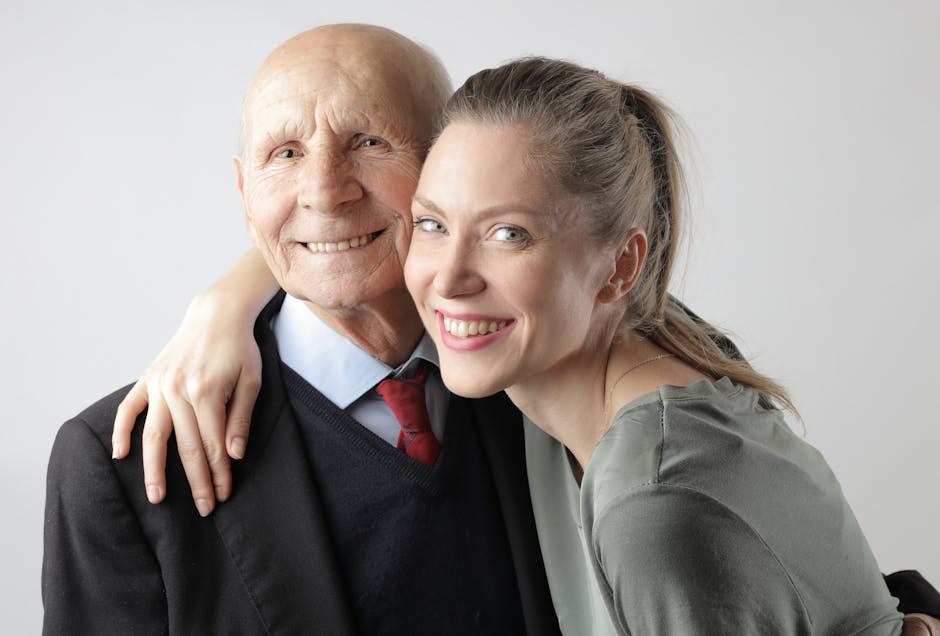A kiss shared with a friend can feel like a jolt to the compass you both relied on-suddenly true north seems less certain, and a familiar map looks new. That doesn’t mean the bond is broken. With patience, clarity, and good communication, you can stay steady and decide whether your connection returns to the comfortable lane you knew or carefully explores another direction. This guide offers a grounded approach to protect the friendship while honoring feelings on both sides, so you can move forward without panic and with respect.
Understanding what the moment meant
When a kiss happens between friends, the heart can race ahead of clear thinking. Taking time to reflect is not avoidance-it’s stewardship of the friendship. Notice any rush to assign meaning, and slow it down. You are both more than one moment, and the friendship deserves a thoughtful reading of what really happened.
First, pause. Let the nervous energy settle. A short breather allows your thoughts to separate from the surge of surprise. This pause helps you protect the friendship by preventing impulsive reactions that can blur intentions.

Reflect privately. Ask yourself what led up to the kiss. Was it curiosity, comfort, chemistry, or a mix? Consider context-timing, setting, mood-and how those elements can amplify emotions without necessarily defining long-term meaning for the friendship.
Journal your feelings. Writing reduces mental noise and reveals patterns. It also serves the friendship by turning scattered thoughts into readable signals you can later share with care.
Think in shades, not absolutes. Attraction and affection are not on-off switches. Accept that you may feel excited and unsettled at once. Holding that complexity protects the friendship from being forced into a rigid label too soon.

Opening a conversation that keeps you connected
Clarity grows in dialogue. A respectful talk is not a courtroom-there’s no verdict to deliver-it’s a shared attempt to understand each other’s experience and safeguard the friendship. Approach with empathy, and speak for yourself rather than speaking for the other person.
Choose the right moment. Pick a calm time in a low-pressure environment. Signal your intent: preserving the friendship first, exploring meaning second.
Lead with ownership. Use language like “I felt…” and “I’m wondering…” rather than “You made me…” Owning your side helps the other person feel safe-and safety nourishes the friendship.

Ask open questions. Invite their perspective: “How did it feel for you?” “What do you hope happens next?” Listening-genuinely-keeps the friendship at the center of the discussion.
Reflect back. Paraphrase their words before responding. This simple step reduces misunderstandings and reinforces that the friendship matters more than being “right.”
Clarify hopes and boundaries. Are you both leaning toward remaining close friends? Curious about romance? Unsure? Naming the uncertainty is honest-and honesty strengthens the friendship.
Setting boundaries that honor both of you
Boundaries are not barriers; they are guidelines for caring. Clear agreements reduce ambiguity, protect feelings, and keep the friendship from drifting into confusion.
Define the current lane. If you both want to remain platonic, say so plainly. If you’re unsure, propose a “gentle pause” on physical affection while you evaluate next steps. Precision supports the friendship by reducing mixed signals.
Manage physical proximity. After a charged moment, closeness can reignite uncertainty. Adjusting how you greet, cuddle during movies, or share space can help the friendship recalibrate without drama.
Be consistent. Boundaries only work when they’re lived. Consistency shows respect and makes the friendship predictable again-predictability is soothing when emotions have been stirred.
State your communication needs. Maybe you agree to check in once a week about how things feel, or to slow text frequency for a little while. A transparent plan protects the friendship from silent assumptions.
Respect “no” without protest. If either of you declines more intimacy-physical or emotional-receive it with grace. Respect in these moments is what keeps a shaken friendship sturdy.
Choosing a path: stay platonic, explore romance, or hold the question
Not every kiss is a doorway-some are a cul-de-sac that teaches you where not to go. Others hint at possibilities. Whatever you decide, choose together, and let the friendship be your compass for fairness and care.
If you remain platonic, treat the kiss like a plot twist, not the whole story. Reaffirm why the friendship matters: shared history, trust, laughter, support. Create fresh memories-new meals, day trips, inside jokes-so the narrative of the friendship isn’t dominated by a single scene.
If you explore romance, move deliberately. Set expectations for pace, privacy, and check-ins. Honor the origin-this began as a friendship-by keeping kindness and curiosity front and center.
If you’re unsure, adopt a time-limited evaluation. For a few weeks, keep boundaries steady and notice what changes. Curiosity without pressure lets the friendship breathe while you gather clarity.
Working through emotions without letting them run the show
Emotions want expression, not domination. When you allow them space-without letting them steer-you protect the friendship from stormy decisions.
Name the feeling: excited, awkward, hopeful, anxious. Accurate labels reduce reactivity. Being specific guides you toward choices that preserve the friendship.
Avoid mind-reading. Rather than guessing what the other person thinks, ask. Curiosity over assumption keeps the friendship clear.
Notice cognitive shortcuts. Your mind might leap from “we kissed” to “we must be meant for more” or “we ruined everything.” Slow those leaps. A careful step protects the friendship from all-or-nothing thinking.
Invite support if needed. A trusted confidant or a neutral professional can help you sort complexity without dragging the friendship into gossip or group debate.
Refreshing the day-to-day rhythm
After a charged moment, everyday habits can feel loaded. Rather than avoiding each other or pretending nothing happened, redesign routines that feel balanced. The aim is to restore ease so the friendship may regain its natural stride.
Keep social contexts steady. Meet where you usually meet, but tweak details-different café table, a daytime walk instead of a late-night movie-small changes that reduce pressure and still nurture the friendship.
Do shared activities. Cooking together, training for a 5K, board games-structured fun replaces awkwardness with momentum and reminds you of the foundation of the friendship.
Use light humor-sparingly. A gentle laugh can defuse tension, but never tease feelings or minimize vulnerability. Respectful levity keeps the friendship warm without dismissing depth.
Practice micro-acknowledgments. Short check-ins like “Are we good?” and “Anything we should adjust?” are small acts that maintain the friendship’s emotional hygiene.
Handling common snags without derailing the bond
Challenges are normal. Expecting them makes you more capable of meeting them with calm. Each snag is a chance to shore up the friendship with better communication and steadier boundaries.
Jealousy or outside commentary. Friends or acquaintances may speculate. Keep your circle informed only as needed, and present a united front. Protecting privacy protects the friendship.
Uneven feelings. If one person is curious about romance and the other isn’t, compassion is key. A kind “no” can still preserve the friendship when coupled with consistent boundaries.
Looping thoughts. Over-analysis can turn a moment into a maze. Create a rule: discuss it directly, not endlessly in your head. Directness clears the fog and steadies the friendship.
Shifts in roles. You may temporarily feel more guarded or more open. State those shifts. Naming them keeps the friendship from silently shape-shifting into confusion.
Trust wobbles. If someone feels misled, offer transparency and patience. Reliability over time-kept promises, steady tone-repairs the friendship gently and effectively.
Re-centering on respect and mutual care
At its core, a solid bond is a practice of honoring the other person’s dignity. That practice is the backbone that holds a friendship upright even when the ground tilts.
Prioritize consent in every domain-physical closeness, emotional disclosure, social visibility. Respectful consent is not just protection; it’s a statement about the kind of friendship you are building.
Validate feelings you do not share. You can understand without agreeing. This nuance keeps the friendship spacious enough for two different inner worlds.
Hold confidence carefully. If you talked about the kiss, keep that talk in trusted channels. Discretion is love in action-and it fortifies the friendship.
Growing together-whatever you choose
Whether you remain platonic or try dating, growth is available. People evolve through honest conversation, gentle boundaries, shared activities, and the courage to recalibrate. Growth folded into daily life is how a friendship matures rather than fractures.
Make meaning from the moment. Ask, “What did we learn about closeness, timing, and care?” Shared meaning turns a surprising chapter into a resource that strengthens the friendship.
Create rituals of steadiness. A monthly coffee, a weekly phone chat, a playlist you trade-small rituals re-anchor the friendship in familiarity.
Track your well-being. If tension keeps spiking, revisit boundaries and lessen pressure. When ease returns, the friendship is telling you that you are on the right path.
Let the past be past. Reference the moment only as needed. Allow new memories to take up more space. Forward motion is a gift you give the friendship.
If romance is on the table
Some close bonds discover that affection was always humming under the surface. If you both decide to explore, let the original spirit of care guide the experiment. Romance that grows from goodwill often remains sturdy because it was watered by the same roots as the friendship.
Design a gentle timeline. Agree on pace and check-ins. This shared plan prevents mismatched expectations and preserves the friendship even as you test a new shape.
Stay transparent with mutual circles. You don’t owe the world details, but clarity with key people reduces gossip and protects the friendship’s privacy.
Keep kindness non-negotiable. When in doubt, choose the action that you’d want if the romance ended and you both returned to being close friends. That choice honors the friendship in every outcome.
If you reaffirm the platonic lane
Returning to a familiar mode can be a relief-and a responsibility. You’re choosing steadiness, not denial. Embrace that clarity and let it inform how you show up.
Say it plainly: “We’re friends, and that matters to me.” The explicit statement removes lingering ambiguity and centers the friendship again.
Reinforce through action. Friendly rituals without flirtation-shared hobbies, group hangouts, supportive texts-rebuild the easy cadence of the friendship.
Release performative distance. You don’t have to act cold to prove you’re not romantic. Authentic warmth, without suggestive undertones, is what keeps the friendship alive.
Communication templates you can adapt
Words can be hard to find when feelings are loud. These simple frames can help you speak with care while protecting the friendship.
“I care about our friendship, and I want to make choices that keep it strong. The kiss surprised me, and I’d like to talk about how we both felt.”
“I’m not sure what the kiss means yet, but I value our friendship first. Can we set a few boundaries while we figure it out?”
“I’m leaning toward staying friends. That matters a lot to me. Can we agree to keep things platonic and check in next week?”
“I felt a spark, and I’m curious-slowly. If that’s not where you are, I want you to know the friendship is still my priority.”
Signals that you’re on the right track
Progress is less about perfection and more about a return to steadiness. Notice these small markers-they indicate that the friendship is regaining its balance.
Conversations feel open again, with fewer edits before you speak.
Plans are easy to make and easier to keep.
Humor returns without cutting corners on respect.
Check-ins shrink because trust grows.
New shared memories begin to outweigh the intensity of the moment that started all this-your friendship starts sounding like itself again.
Keeping the bigger picture in view
Every close bond faces unexpected turns-new jobs, relocations, health scares, and yes, a surprising kiss. What keeps people connected is not perfect behavior but consistent repair. When you notice friction, lean into honesty, not avoidance. When you feel defensive, choose curiosity. When you feel confused, ask rather than assume. These practices aren’t dramatic, but they are the quiet architecture of a durable friendship.
When to seek outside help
Sometimes the emotional knot refuses to loosen on its own. If the conversations keep looping or boundaries keep slipping, a neutral third party can help you translate feelings into agreements. Consider a counselor or an impartial mentor-someone who respects both of you and understands that the goal is the health of the friendship, not a particular outcome.
A fresh narrative for both of you
It’s tempting to treat one kiss like an eraser that threatens to wipe out years of shared history. Instead, think of it as marginalia-an unexpected note in the margin of a story still being written. You get to choose whether that note becomes a turning point or a footnote. Choose with intention; choose with gentleness. Let empathy lead. When you do, you give the friendship the chance to remain the reliable, resilient companion it has always been-sometimes with a new understanding, always with respect.
And remember the essence underneath all this strategy: you like each other. That affection, expressed as care and attention, is the reason you’re reading this at all. If you return to that simple truth, again and again, you’ll find your way-back to platonic ease, toward tender exploration, or through a thoughtful pause. In each case, the measure of success is not the label you land on but the quality of the friendship you maintain as you go.